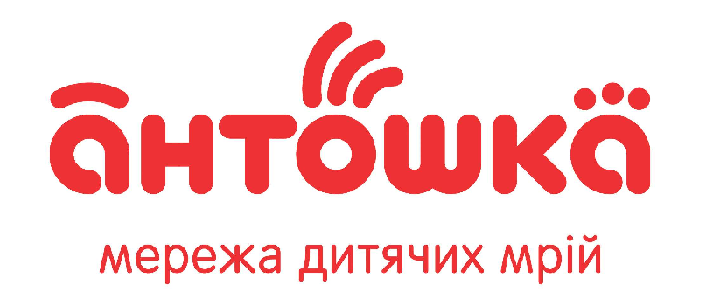
How to create learning material that will interest your employees. Checklist and tips.
On what does the effectiveness of learning depend? On a well developed strategy, regularity or on the motivation of employees? Undoubtedly, all of these are important components for building effective and efficient learning. But what about the quality of learning material? Why are some courses in great demand among employees, while others give mediocre results?
What problems in creating learning content should be avoided? How to turn boring theory into exciting material and develop a learning course that your employees will be enthusiastic about? Find answers to these questions in our article.
What is meant by “Good learning content”?:
1. Simple and clear material that is easy to learn;
2. Useful and exciting, which is interesting to watch to the end;
3. Not extensive and well-structured, which does not cause overload.
Let’s imagine a standard situation:
«You are a learning specialist who needs to develop an interesting course for employees, but all you have is a text on A4 sheets with dry information.»
How to make a good info-product out of it, which will be liked by employees and will help them to absorb new knowledge effectively?
We have collected common problems that should be avoided and created a checklist for developing a learning course.
Common problems in creating learning content that should be avoided
1. Ignoring the level of knowledge of employees on the topic of the input material: whether they need a detailed insight into the topic, explanation of terminology, abbreviations, etc.
2. Large amount of information and long learning courses.
3. The use of monotonous material presentation with plain text without structuring into separate modules.
4. Boring content with too much terminology and sophisticated words.
5. Ignoring feedback, engagement tools and analytics.
«How to develop an effective online course for employees» checklist:
Step 1. Define the learning objectives
Form a clear idea of what you expect from the learning.
Answer the following questions:
– What will employees learn after learning?
– What skills and knowledge will they gain at the end?
– How will they be useful in their work?
Keep the answers to these questions in focus and follow the set goals throughout the course.
Step 2. Describe the target audience of the future course
Make a description of the target audience of the future course. Specify their age, experience, computer skills level, preferences: what kind of learning they find interesting, what design they like the best, etc. This will help you to create a course that will not cause rejection from employees.
Step 3. Develop a learning plan
The plan should contain information about the learning program, its main objectives and a list of available resources. Also include the time spent on achieving the learning objectives. It will help you in the development of learning materials and distribution of time to complete the modules.
Step 4. Develop a course structure
A structured course appears logical, it is easier for employees to engage in it. Describe the course structure by thematic modules. Each module of the learning course should be designed for a specific learning objective and bring employees closer to the learning goal.

example of a structured course
Structured courses are a marker of high quality learning content.
To try the tools for creating learning content in practice, submit your application and instantly get a test demo access to the LMS Collaborator learning portal.
Step 5. Make a list of necessary learning materials
Make a list of all necessary learning materials based on the selected target audience and topic. Answer the following questions to analyze the learning topic and select the necessary materials for it:
- What should employees know and be able to do to achieve the learning objective?
- What will help them to understand the topic better?
- What mistakes do they make in this topic and how can they be avoided through learning?
- What questions may they have and will they be able to find answers to them after learning?
- What results do you expect from employees from the course?
First, develop practical tasks, they will be the basis, the “skeleton” of the course. After that, select theoretical materials that will help to successfully complete the practice. Also consider additional material that will help to further explore the course topic: articles from the Internet, videos, books, etc.
Step 6. Add visual elements to your course
Visualization helps to improve the perception of the material and makes learning more interesting. Pay attention to the course appearance. Add more bright and multimedia elements, animations, and characters if possible. In developing the course design, follow the corporate style according to the company’s brand book. Use corporate colors and logos. It will help to enhance the audience’s connection with the company’s brand and its values.
Step 7. Add checkpoints to the course
After each module or important topics, add a short self-check and review test. It will help to determine the progress of course and the level of the employee’s understanding of the material. Be sure to add a final test at the end of the course to check the knowledge gained and determine the need for additional learning.

example of a course with progress tests for knowledge control
Step 8. Add awards to enhance motivation
Game elements help to increase engagement and motivation to learn. Add awards to your courses that employees can get after successfully completing the learning. These can be various badges that will demonstrate the skills and knowledge of employees. In this way, you will not only motivate employees to complete the course, but also support health competition among the participants.

examples of awards in LMS Collaborator
Step 9. Organize the collection of feedback from learning participants
Engage employees in dialogue and communication. At the end of the course, add surveys or independent tests to collect feedback from participants. Their feedback will help you understand what’s missing in the course and how to improve the quality of the content to make it appealing to learners.

example of feedback survey
Improve employee learning and collect feedback with LMS Collaborator surveys.
Submit an application and get the demo access to the learning portal right now.
Expert tips: how to turn dull theory into interesting educational material
- Use multi-format and visual methods of providing information: video, infographics, animated pictures, presentations, etc.;
- Structure the material into parts and present in portions. Use the microlearning format;
- Use practical examples and cases to make employees understand the value of learning;
- Be creative in creating materials: use storytelling, add characters and game elements. But do not forget about the learning objectives;
- Filter information and keep relevant content only;
- Present complicated material in simple words. Do not use unnecessary terminology;
- If terminology is unavoidable, compile a small glossary of basic concepts that employees should know;
- Provide links to additional resources to allow employees to further explore the topic if needed;
- If the course contains instructions, they should be brief and clear;
- Use feedback to assess the quality of the material.
Conclusion
You can create high-quality and interesting learning material even from simple safety information. The main thing is to keep in mind the importance of multimedia and structure. This will greatly facilitate the assimilation of the material. Before developing an online course, define the learning goals and discuss them with your employees. Tell them how the learning will be conducted and what benefits they will receive. Also, experts advise to add intermediate forms of control to each module of the learning course. In a nutshell – a test. And finally – a feedback system. Think it over, let colleagues share their thoughts on the learning material. This will help to enhance the quality of the learning content in the future.



































